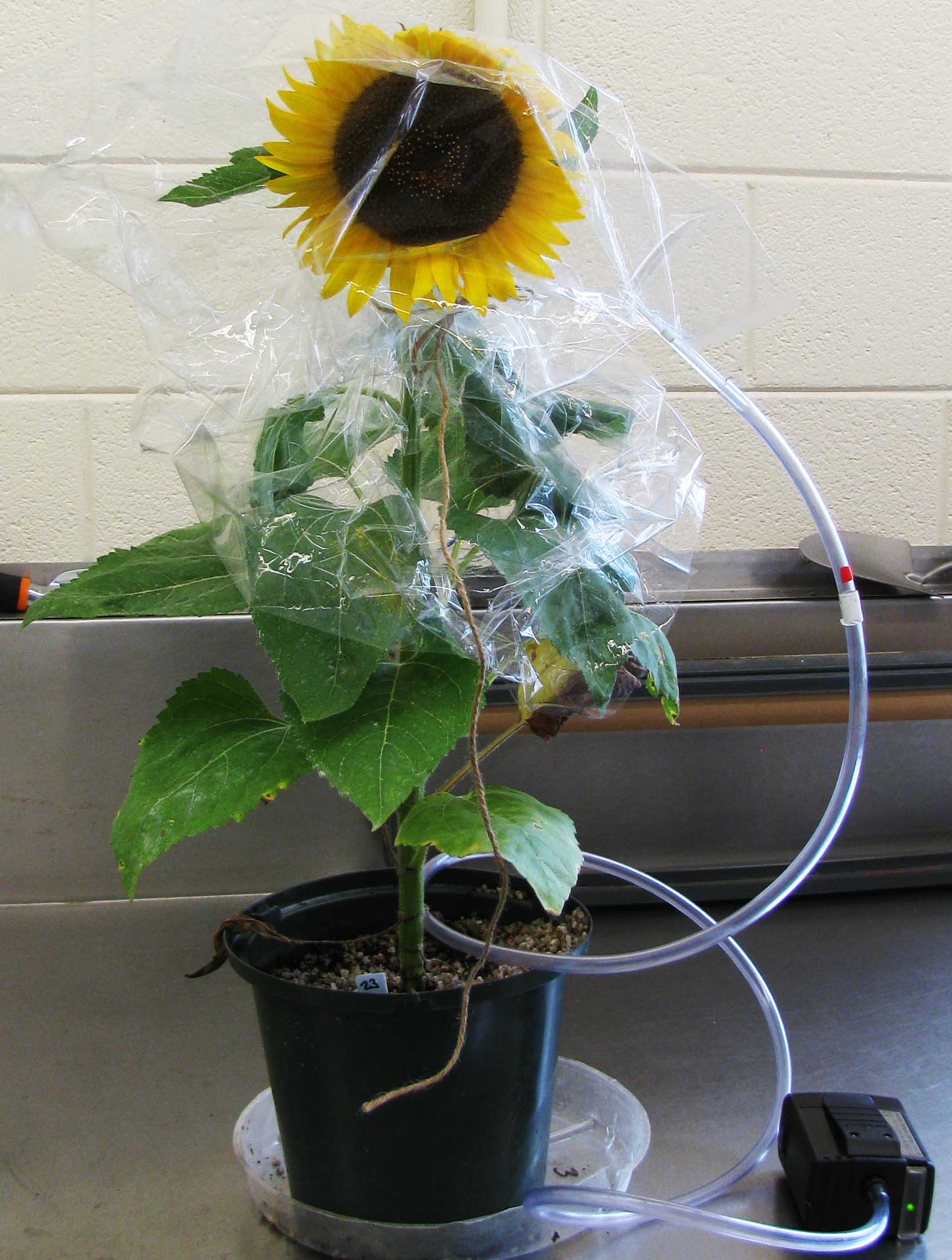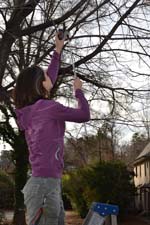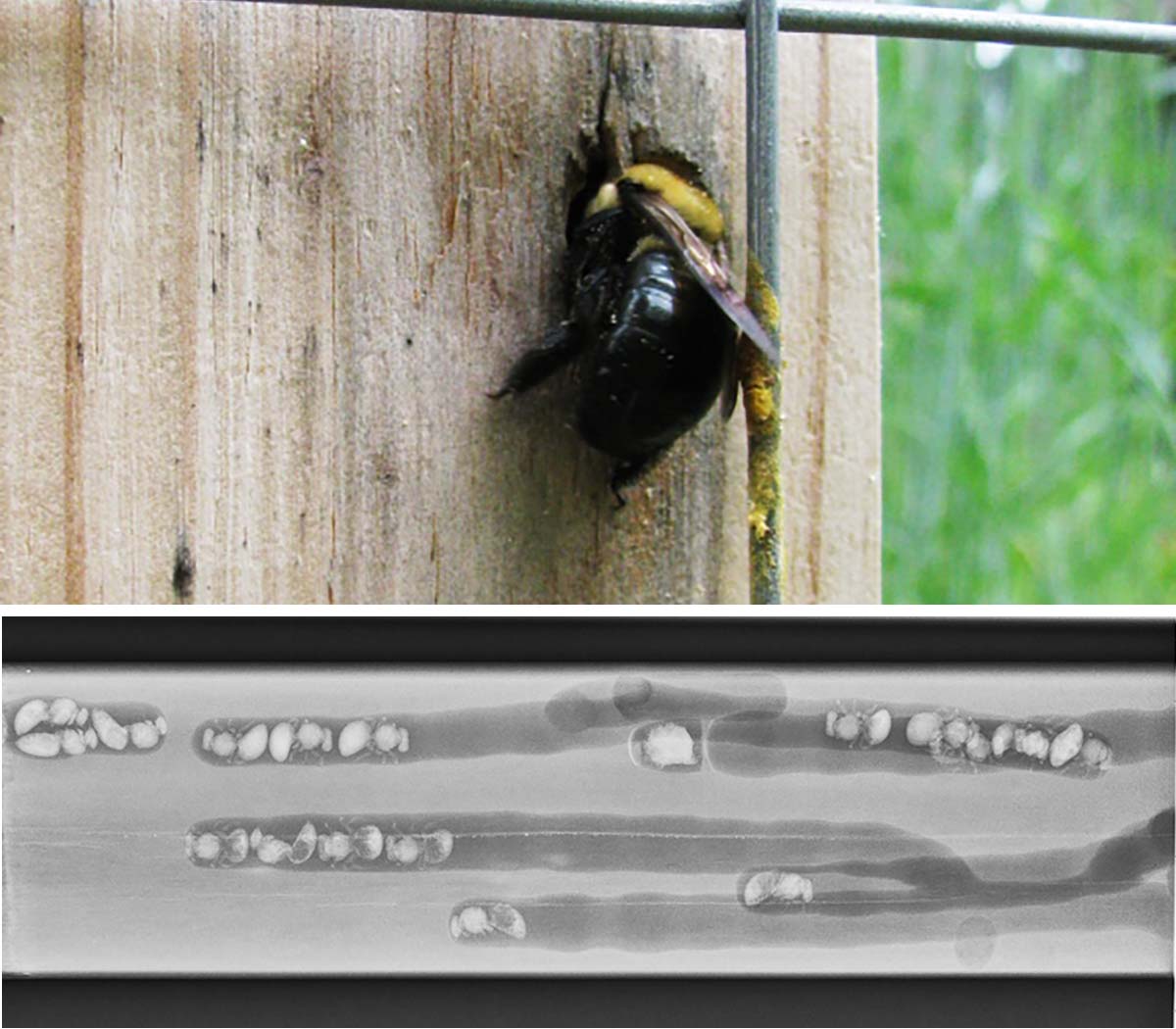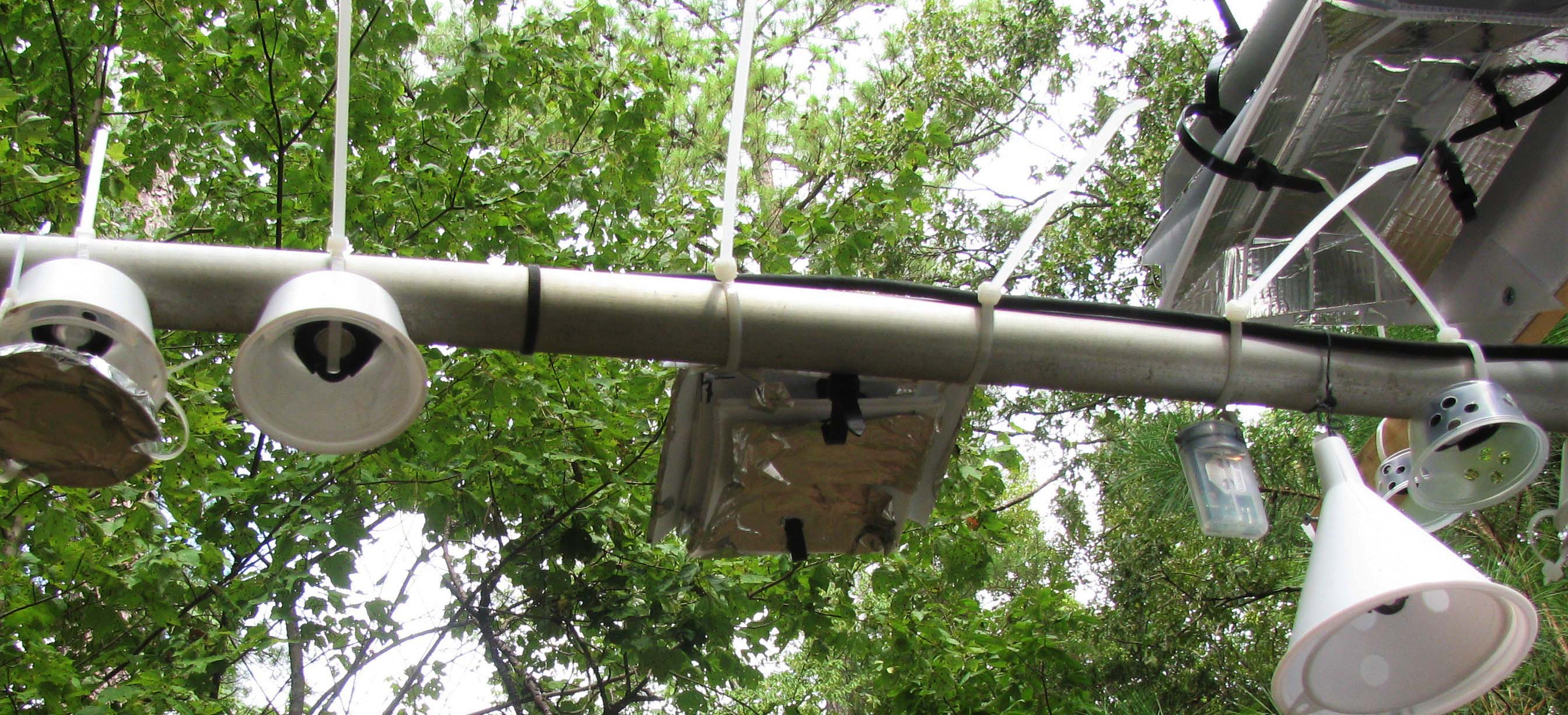Research in my lab works at the interface of urbanization and climate change to understand how organisms, populations, and ecological interactions respond to anthropogenic stressors–and what we can do about it. We work mainly with invertebrates and plant-insect interactions. Here are a few recent and ongoing projects.
Effects of climate and atmospheric change on plant-pollinator interactions

Human activities are changing climate and biogeochemical cycles at unprecedented rates, with uncertain consequences for biodiversity and ecosystem function. Globally, air pollution from agriculture, industry, and transportation drive increased temperature, CO2 concentration, and atmospheric deposition of reactive nitrogen. Locally, cities have already experienced these changes, decades ahead of the global average. We are interested in how the combined effects of these changes ripple through ecosystems, from plants to herbivores and pollinators. Recent work in the NCSU Phytotron has revealed striking changes in floral morphology, scent, pollen, and nectar in response to controlled changes in climate and atmosphere.
People
Marisol Mata, MS student, NCSU (2018 graduate); Viney Aneja, NCSU; Laura Burkle, Montana State University; Danesha Seth Carley, NCSU; Steven Frank, NCSU; Rebecca Irwin, NCSU; Tom Rufty, NCSU; Justin Runyon, USDA Forest Service
Insects, urbanization, and climate change

 Cities are warmer than the surrounding landscape, causing some insects to grow, reproduce, or develop faster than they do outside the city, while others may be pushed above their thermal optima and decline. Past projects have shown that gloomy scale insects (the little bumps covering the branch in the photo) are most abundant in the hottest urban sites around Raleigh, NC–and on historical maple specimens collected from hot time periods and hot places. Past and ongoing projects have worked with wild bees to understand how urban warming affects their physiology and drives changes in community composition. Understanding how plant-insect interactions work in cities today may give a preview of how the surrounding landscape will also change with global warming.
Cities are warmer than the surrounding landscape, causing some insects to grow, reproduce, or develop faster than they do outside the city, while others may be pushed above their thermal optima and decline. Past projects have shown that gloomy scale insects (the little bumps covering the branch in the photo) are most abundant in the hottest urban sites around Raleigh, NC–and on historical maple specimens collected from hot time periods and hot places. Past and ongoing projects have worked with wild bees to understand how urban warming affects their physiology and drives changes in community composition. Understanding how plant-insect interactions work in cities today may give a preview of how the surrounding landscape will also change with global warming.
People
April Hamblin, MS student, NCSU (2015 graduate); Thomas Reed, undergraduate student, NCSU; Rob Dunn, NCSU; Steven Frank, NCSU; Margarita Lopez-Uribe, Penn State; Adam Terando, USGS
Key publications
Hamblin, A. L.†, Youngsteadt, E.†, López-Uribe, M. M., and Frank, S. D. 2017. Physiological thermal limits predict differential responses of bees to urban heat-island effects. Biology Letters 13:20170125. †Contributed equally. link pdf
Youngsteadt, E., Ernst, A. F., Dunn, R. R., and Frank, S. D. 2016. Responses of arthropod populations to warming depend on latitude: evidence from urban heat islands. Global Change Biology 23:1436-1447. link pdf
Youngsteadt, E., Dale, A. G., Terando, A. J., Dunn, R. R., and Frank, S. D. 2015. Do cities simulate climate change? A comparison of herbivore response to urban and global warming. Global Change Biology 21:97-105. link pdf
Carpenter bees
 Almost everyone in the eastern US will recognize this bee, known for drilling its nests into porches and eaves. Eastern carpenter bees are so common in cities that they have rarely been studied in “nature.” What is it about cities that favors this species, how has urban living changed its biology and ecology, and how can it be managed without pesticides?
Almost everyone in the eastern US will recognize this bee, known for drilling its nests into porches and eaves. Eastern carpenter bees are so common in cities that they have rarely been studied in “nature.” What is it about cities that favors this species, how has urban living changed its biology and ecology, and how can it be managed without pesticides?
People
Michelle Cavalieri, MS student, NCSU; Rob Dunn, NCSU
Reproductive ecology of rare plants
 When a species becomes very rare, it can be hard for its members to find one another to mate; in the case of plants, rare species may fail to attract the pollinators that move their gametes. Ongoing projects address the reproductive ecology of three species of federally endangered plants on Fort Bragg in the North Carolina sandhills, as well as that of Venus flytrap–a carnivorous plant native only to North and South Carolina.
When a species becomes very rare, it can be hard for its members to find one another to mate; in the case of plants, rare species may fail to attract the pollinators that move their gametes. Ongoing projects address the reproductive ecology of three species of federally endangered plants on Fort Bragg in the North Carolina sandhills, as well as that of Venus flytrap–a carnivorous plant native only to North and South Carolina.
People
Laura Hamon, PhD student, NCSU; Michelle Targaszewski, MS student, NCSU; Rebecca Irwin, NCSU; Michael Kunz, NC Botanical Garden; Margarita Lopez-Uribe, Penn State; Clyde Sorenson, NCSU; Dale Suiter, USFWS
Key publications
Hamon, L. E., E. Youngsteadt, R. E. Irwin, and C. E. Sorenson. 2018. Pollination ecology and morphology of Venus flytrap in sites of varying time since last fire. Annals of the Entomological Society of America. link
Youngsteadt, E., R. E. Irwin, A. Fowler, M. A. Bertone, S. J. Giacomini, M. Kunz, D. Suiter, and C. E. Sorenson. 2018. Venus flytrap rarely traps its pollinators. American Naturalist. lay summary link pdf
Measuring microclimates
 Air temperature is a key climate variable that is widely measured by ecologists, and has the potential to link biological conditions to historical temperature records and outputs of climate models. Measuring air temperature is not, however, straightforward. The availability of low-cost temperature sensors has enabled field ecologists to deploy high-density networks of sensors to measure local, microclimatic variation–but to obtain unbiased data that can be compared across studies, we need to do better shielding these instruments from solar radiation.
Air temperature is a key climate variable that is widely measured by ecologists, and has the potential to link biological conditions to historical temperature records and outputs of climate models. Measuring air temperature is not, however, straightforward. The availability of low-cost temperature sensors has enabled field ecologists to deploy high-density networks of sensors to measure local, microclimatic variation–but to obtain unbiased data that can be compared across studies, we need to do better shielding these instruments from solar radiation.
People
Emily Meineke, Harvard; Sara Prado, NCSU; Adam Terando, USGS
Key publications
Terando, A. J., S. Prado, and E. Youngsteadt. In press. Construction of a compact low-cost radiation shield for air-temperature sensors in ecological field studies. JOVE.
Terando, A. J., E. Youngsteadt, E. K. Meineke, and S. G. Prado. 2017. Ad hoc instrumentation methods in ecological studies produce highly biased temperature measurements. Ecology and Evolution. doi: 10.1002/ece3.3499 link pdf
In the News
The Washington Post “Venus flytraps give insects that pollinate their flowers a break. They don’t eat them.” February 7, 2018
Science News “Pollinators are usually safe from a Venus flytrap” February 6, 2018
The News & Observer “NC State study: Triangle bees can’t stand the heat” July 14, 2017
The New York Times “Bugs in Manhattan compete with rats for food refuse” December 2, 2014
CBC Quirks and Quarks “Ants perform street cleaner role on Broadway” December 6, 2014
Science “Bugs in Manhattan eat thousands of kilograms of trash each year” December 2, 2014
Newsweek “Want to see the earth after global warming? Move to the City” August 2014
Greenwire “Oak, maple pests thrive in warmer weather — study” August 2014
Entomology Today “Museum specimens show how scale insects will respond to climate change August 2014
NCSU News “Museum specimens, modern cities show how an insect pest will respond to climate change” August 2014
NC State University Bulletin “Researchers regroup post Sandy” February 2013
Miller McCune “Curiouser and Curiouser” podcast February 2011
BioScience March 2008
NCSU News January 2008
ScienceNOW (“Smelly seeds”) January 2008
